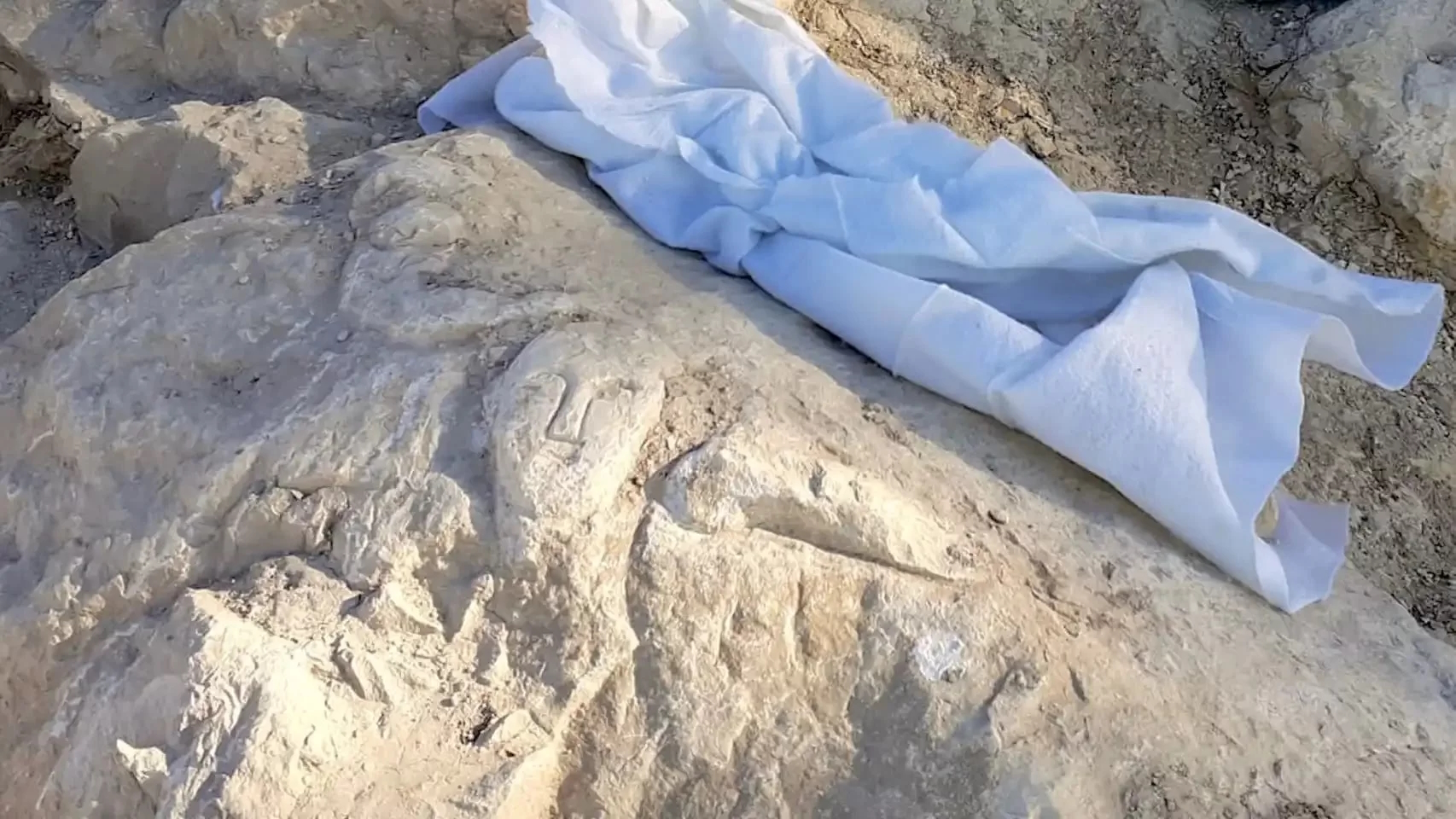A carved relief of a face, a horn of plenty and a phallus has been discovered at the Tossal de La Cala archaeological site in modern-day Benidorm on southeastern Spain’s Mediterranean coast. Dating to the 1st century B.C., the relief is unique with no known parallels in any of the territories occupied by Rome in the Republican era.
The three elements of the relief cover a small area of 57×42 cm (22×16.5 inches). A section on the upper right appears to missing, suggesting it may have been larger originally.
The relief was discovered in January 2020 when it was accidentally exposed by heavy rains. Archaeologists reported it to municipal authorities emphasizing its “exceptional historical significance” and the urgent need to keep the find under wraps for its own protection. They have been working ever since to figure out how best to display this archaeological treasure in a secure manner without removing it from its context. There’s a plan in place now to exhibit it in situ in safe and accessible conditions within the next few months.
Tossal de La Cala was a Roman castellum (military fort) built on the hilltop overlooking the coast by renegade Roman general Quintus Sertorius in 77 B.C. Sertorius and his Iberian allies rebelled against Rome in the Sertorian War (80–72 B.C.). It was one of a network of forts constructed by Sertorius on steep cliffs and in barely accessible coves along the coastline of the Alicante region. They were lookout stations more than heavily garrisoned forts, intended to monitor enemy naval movements.
The foundations and floor plan of the castellum are the only visible remains of the fort at the top of the promontory today.
